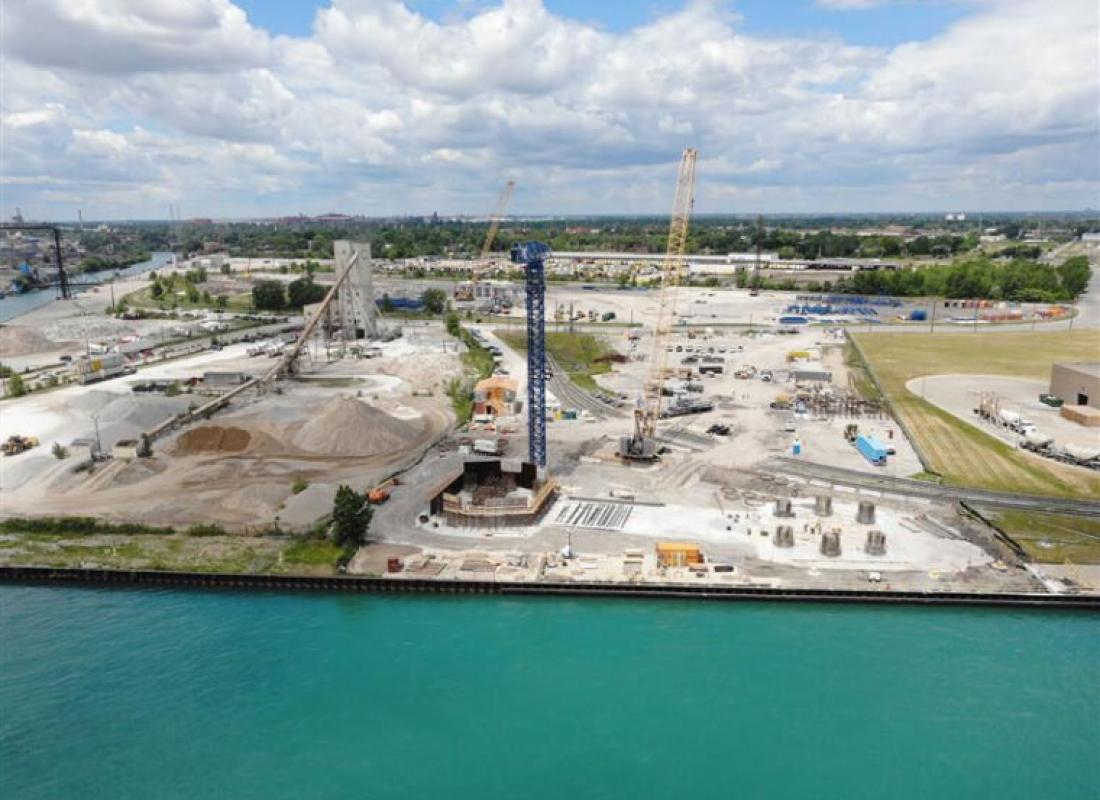


Following four years of intensive study, the Gordie Howe International Bridge project received approvals under environmental legislation from Canada, the United States, Ontario and Michigan.
WDBA is required to work with provincial, state and federal authorities to ensure that all of the commitments to environmental mitigation and monitoring as identified in the environmental approvals are implemented effectively. This includes all impacts to the natural environment such as cultural heritage, preservation of historic buildings and environmental justice along with more traditional elements such as storm water quality and management of species at risk.
To that end, WDBA and our private-sector partner, Bridging North America, will follow detailed environmental management plans for the design, construction and operations phases of the project. These plans incorporate the environmental commitments outlined in the environmental study as well as the development of follow-up and monitoring programs.
WDBA recognizes the importance of environmental protection to communities on both sides of the border and, together with Bridging North America, we are working together to develop an Environmental Management System (EMS) that will be certified to the ISO 14001 standard.
We are committed to ensuring the Gordie Howe International Bridge, the Canadian and US Ports and Entry and the Michigan Interchange are will be built to the highest standards of engineering incorporating sustainability, aesthetics and functionality,
Learn more about sustainability
Learn more about our environmental work
The coordinated environmental studies
The Detroit River International Crossing (DRIC) study was a coordinated Canadian and US environmental study that identified requirements to mitigate potential negative impacts from a new crossing. The study was initiated in 2005 and concluded in 2008. Approvals on both sides of the border were received in 2009.
Through the Ontario Environmental Assessment Act (OEAA), the Canadian Environmental Assessment Act (CEAA) and the US National Environmental Protection Act (NEPA) approvals, more than 450 conditions across all project phases were identified.
The US commitments are documented in the Environmental Impact Statement, Green Sheet and Memorandum of Agreement.
Canadian requirements are documented in the Canadian Screening Report (which includes the Provincial Environment Assessment and the Notice to Proceed.)
Both countries committed to future communication and consultation with the public, Indigenous Peoples, regulatory agencies and other stakeholders on various topics throughout the construction and operation of the Gordie Howe International Bridge project.
These commitments will be completed by WDBA and/or the private sector partner at appropriate times during the design, build, operation and maintenance of the Gordie Howe International Bridge.
The Bridge to Strengthen Trade Act (BSTA) exempts the construction of the Gordie Howe International Bridge project from certain federal laws under which permits, approvals or authorizations would normally be required. The BSTA however, still compels the project to comply with the intent of the laws even through a permit or approval is not issued.
WDBA is working with Bridging North America, the Department of Fisheries and Oceans and Environment and Climate Change Canada, to update and amend BSTA plans to capture mitigation and monitoring needs going forward.
Bridging North America is required to develop an Environment Management System that includes monthly reporting to WDBA to ensure compliance with the Project Agreement. It is also required to be certified to the ISO 14001 standard.

